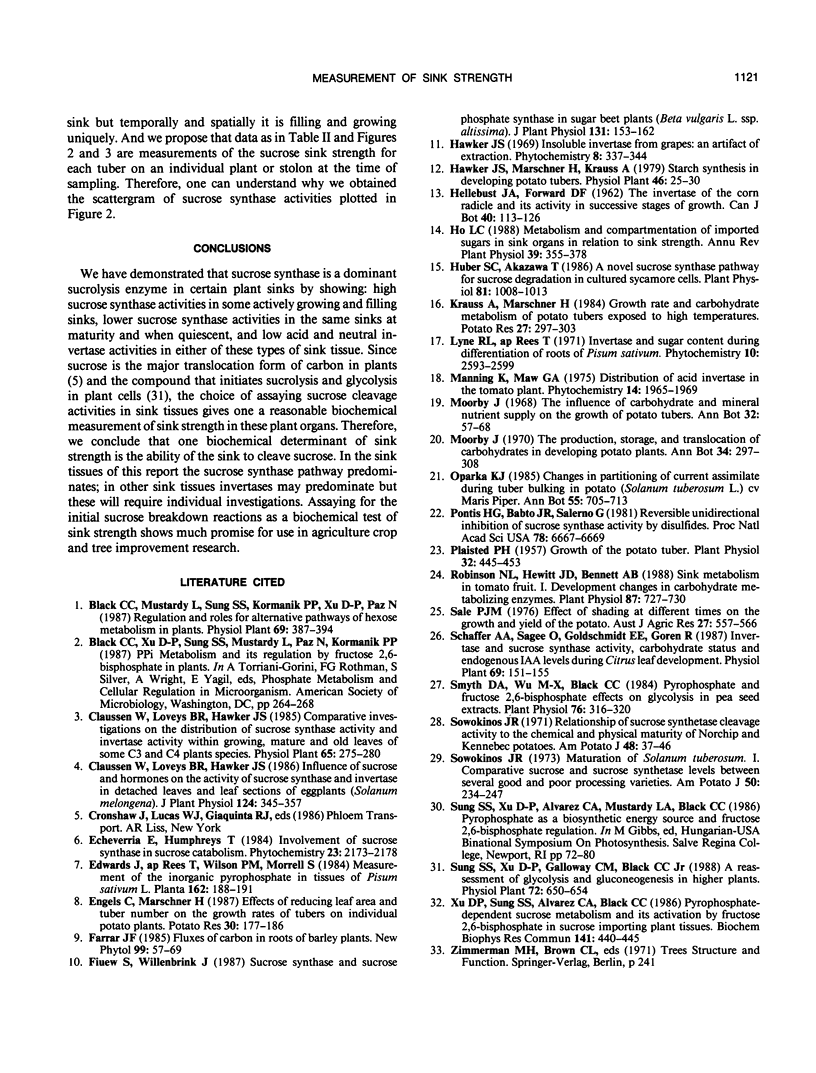Abstract
Certain actively filling plant sucrose sinks such as a seed, a tuber, or a root can be identified by measuring the uridine diphosphate and pyrophosphate-dependent metabolism of sucrose. Sucrolysis in both active and quiescent sucrose sinks was tested and sucrose synthase was found to be the predominant sucrose breakdown activity. Sucrolysis via invertases was low and secondary in both types of sinks. Sucrose synthase activity dropped markedly, greater than fivefold, in quiescent sinks. The tests are consistent with the hypothesis that the sucrose filling activity, i.e. the sink strength, of these plant sinks can be measured by testing the uridine diphosphate and pyrophosphate-dependent breakdown of sucrose. Measuring the initial reactions of sucrolysis shows much promise for use in agriculture crop and tree improvement research as a biochemical test for sink strength.
Full text
PDF




Selected References
These references are in PubMed. This may not be the complete list of references from this article.
- Huber S. C., Akazawa T. A novel sucrose synthase pathway for sucrose degradation in cultured sycamore cells. Plant Physiol. 1986 Aug;81(4):1008–1013. doi: 10.1104/pp.81.4.1008. [DOI] [PMC free article] [PubMed] [Google Scholar]
- Plaisted P. H. Growth of the Potato Tuber. Plant Physiol. 1957 Sep;32(5):445–453. doi: 10.1104/pp.32.5.445. [DOI] [PMC free article] [PubMed] [Google Scholar]
- Pontis H. G., Babio J. R., Salerno G. Reversible unidirectional inhibition of sucrose synthase activity by disulfides. Proc Natl Acad Sci U S A. 1981 Nov;78(11):6667–6669. doi: 10.1073/pnas.78.11.6667. [DOI] [PMC free article] [PubMed] [Google Scholar]
- Robinson N. L., Hewitt J. D., Bennett A. B. Sink metabolism in tomato fruit : I. Developmental changes in carbohydrate metabolizing enzymes. Plant Physiol. 1988 Jul;87(3):727–730. doi: 10.1104/pp.87.3.727. [DOI] [PMC free article] [PubMed] [Google Scholar]
- Smyth D. A., Wu M. X., Black C. C. Pyrophosphate and fructose 2,6-bisphosphate effects on glycolysis in pea seed extracts. Plant Physiol. 1984 Oct;76(2):316–320. doi: 10.1104/pp.76.2.316. [DOI] [PMC free article] [PubMed] [Google Scholar]
- Xu D. P., Sung S. J., Alvarez C. A., Black C. C. Pyrophosphate-dependent sucrose metabolism and its activation by fructose 2,6-bisphosphate in sucrose importing plant tissues. Biochem Biophys Res Commun. 1986 Dec 15;141(2):440–445. doi: 10.1016/s0006-291x(86)80192-9. [DOI] [PubMed] [Google Scholar]


